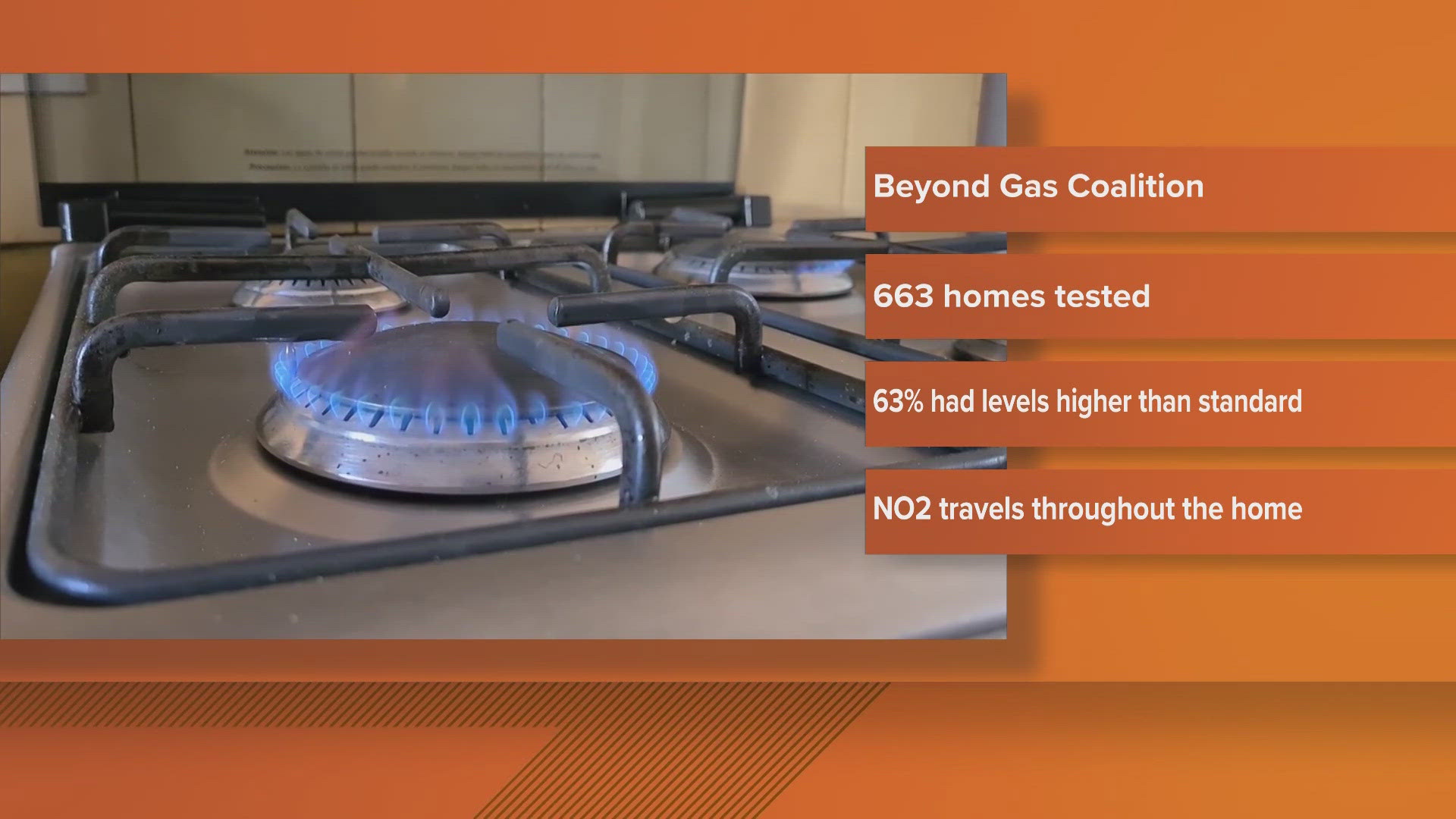WASHINGTON — Nearly two-thirds of D.C. and Montgomery County households with gas stoves are breathing in unhealthy levels of air pollution, a new report says.
In 63% of the 663 kitchens tested by the Beyond Gas coalition study, researchers recorded nitrogen dioxide levels over the health standard of 100 parts per billion from the Environmental Protection Agency.
Of the 269 D.C. kitchens, they found 77% were over the health standard, and the average level reached almost double the recommended threshold, hitting 181 parts per billion. Of the 394 Montgomery County kitchens, they found 53% were over the health standard, and the average level reached 159 parts per billion.
Barbara Briggs, lead author of the report and member of Beyond Gas D.C. coalition, said the study shows gas stoves have been silently polluting indoor air quality.
“This investigation makes it clear that the gas we burn in our kitchens is putting our health at risk, especially for children and those with respiratory conditions,” Briggs said.
Washington Gas, along with multiple building groups, are currently suing the District over a net-zero building code that would ban gas appliances from being installed in some buildings by the start of 2027.
“... Right now, communities are facing an unprecedented attack on our ability to keep residents safe with baseless lawsuits seeking to undermine healthy building standards and impede progress,” Briggs said in the press release. “Supporting families to upgrade our homes with cleaner, high efficiency electric appliances such as induction cooktops is not just important for the climate, it’s a public health necessity.”
Researchers asked residents to turn on gas stoves, and measured the levels of nitrogen dioxide after using the stove for 15 and again at 30 minutes. Then, they measured the levels 15 minutes after the stove had been turned off. At some households, researchers had to keep testing the levels for several hours before they returned to normal.
They found that the nitrogen dioxide levels stayed high for hours after testing and that they were not limited to the kitchen — in some cases finding high levels far away in upstairs bedrooms. The highest levels were recorded in homes with small, enclosed kitchens, but high levels were recorded in kitchens of a variety of sizes and layouts.
Children raised in homes with gas stoves are 42% more likely to develop asthma symptoms, research shows. And 12.7% of childhood asthma cases are attributed to gas stoves nationally, as of 2022. Exposure to nitrogen dioxide is also associated with respiratory and cardiovascular issues and developmental and cognitive problems in children, Beyond Gas D.C. said.
Even when stoves are turned off, they emit benzene at higher levels than second hand smoke exposure, according to research from Stanford.
With smaller, enclosed kitchens being affected at the highest rates, Beyond Gas D.C. said the health effects of using gas stoves may disproportionately affect low-income homes because of poor ventilation and other factors.
For anyone who has a gas stove, the report recommends trying to increase ventilation while cooking. It also recommends using electric appliances that are already in the home or buying inexpensive portable induction cooktops to use instead.
The whole report, “Cooking Up Danger: Community Study Reveals Hazardous Nitrogen Dioxide Levels in D.C. and Maryland Kitchens,” can be seen here.
“This research, conducted over two years in hundreds of kitchens across the region, is the latest evidence that the gas industry’s attempt to cast methane gas as a cleaner alternative is a lie, and we’re paying the price in the form of more polluted air and continued climate pollution from our homes and buildings,” said Katie Meyer, a clean energy campaign representative from the Sierra Club’s D.C. Chapter, said in a press release. “It’s time for both D.C. and Maryland to turn the page and invest in a future where parents don’t have to worry about their child developing asthma every time they cook dinner.”

